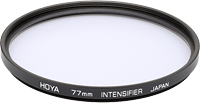City folk: Here’s how you can join in the astrophotography fun!
posted Tuesday, April 26, 2016 at 6:59 AM EST

Ever wanted to try your hand at astrophotography? It can be a lot of fun, but if you're in or near a big city (or even a not so big one), light pollution can be a major problem, obscuring your subjects and tinting your photos with an ugly skyglow. But it doesn't have to be that way!
Specialist Light Pollution Suppression filters are available that can greatly reduce the impact of light pollution on your astrophotography images by blocking the wavelengths typical of light pollution, while still allowing the night sky's light to reach your image sensor. (You can find some great information on some of your options in an article from AstroPix, although it was published quite some time ago and not all of the links work now.)
These filters can be mighty expensive, though, and so for those who're looking to try their hand at astrophotography for the first time, much more affordable didymium "red enhancer" filters are the recommended option. They don't do quite as good a job as would the more expensive options, not surprisingly, but the results can still be pretty impressive.
The folks over at Lonely Speck have just published a review of one such filter, the Hoya Red Enhancer (Intensifier) which is available in sizes from 49mm to 77mm with quite affordable pricing. (At IR affiliate B&H Photo Video, these filters run anywhere from $22 to $68 or thereabouts, depending on the filter size in question.) And as you'll see in Lonely Speck's review, the Hoya Intensifier really does work rather well, greatly reducing skyglow even near big cities like Los Angeles.
Hop on over to Lonely Speck now, and see for yourself what a didymium filter can do for your astrophotography! And when you're done there, you'll also want to check out Dave Morrow Photography for a great tutorial on how to dial back the noise in your night sky photos without softening the stars themselves. (We've embedded Dave's tutorial video above, but the full article has much more detailed information on his technique.)